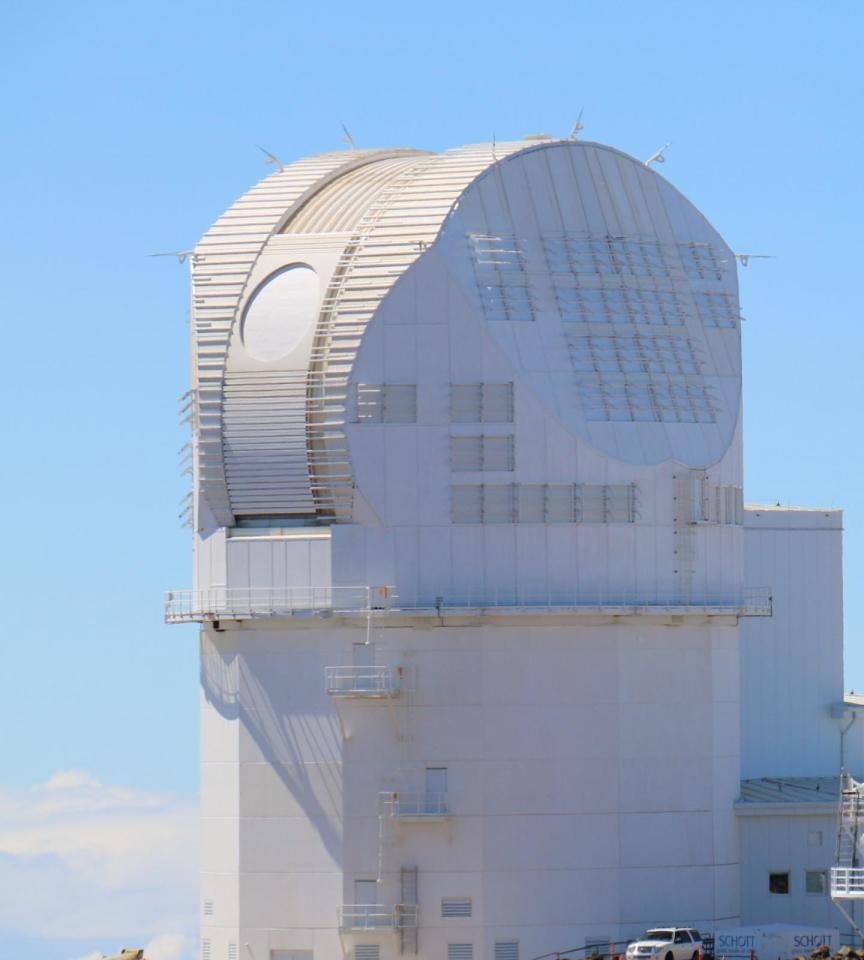Astronomers have released a stunningly detailed image revealing the structure of a massive sunspot as it temporarily darkened the Sun’s surface on January 28, 2020. The new image was taken during the final commissioning phase of the upcoming Daniel K. Inouye Solar Telescope, which will be capable of revealing structures on our parent star as small as 20 km (12.4 miles) across.
Sunspots appear as dark blemishes that spring into life in areas of the Sun where it’s magnetic field is particularly strong and is able to prevent a portion of the heat trapped within the Sun from rising, thus creating a cooler region at the surface. Despite being cooler than their surroundings, sunspots still reach temperatures of around 7,500 °F (4,150 °C)
The newly released piece of stellar photography was captured by the Daniel K. Inouye Solar Telescope, located on the Hawaiian island of Maui. Construction on the U.S. National Science Foundation’s (NSF) 4-m (13-ft) reflecting telescope began back in 2013. Once complete, the cutting-edge observatory will be capable of offering the spatial, temporal, and spectral resolution needed to measure the relatively small-scale magnetic structures present both on the surface and in the atmosphere of our parent star.
Armed with these detailed views, astronomers will be able to gain a greater understanding of how magnetic and plasma processes drive solar activity.

NSF/NSO/AURA
Disruption from the COVID-19 pandemic has led to delays in the construction of the telescope, however, it is hoped that the observatory will begin science operations no later than 2021.
The first release from the Daniel K. Inouye Solar Telescope detailed a 36,500 x 26,500-km (22,600 x 22,600-mile) view of our star in unprecedented detail, revealing convection cells forming in the turbulent plasma that makes up the Sun’s surface.
The latest image covers a region spanning 6,214 km (10,000 miles) across. Whilst this expanse is large enough to comfortably swallow Earth, it is but a fraction of the Sun’s surface.
Surrounding the sunspot is an unusual streaky region that results from an interplay of warmer and cooler gases being shaped by powerful magnetic fields and super-heated matter moving upward from below.
“The sunspot image achieves a spatial resolution about 2.5 times higher than ever previously achieved, showing magnetic structures as small as 20 km (12.4 miles) on the surface of the sun,” explains Dr. Thomas Rimmele, lead author of a new paper accompanying the image and associate director at the NSF’s National Solar Observatory.
This sunspot represents one of the first of the new 11-year solar activity cycle. Our star only recently passed through the solar minimum – the point at which it exhibits the least activity – in December 2019. Activity is expected to increase as the Sun progresses towards its solar maximum in 2025, so there couldn’t be a better time for the Daniel K. Inouye Solar Telescope to begin its scientific career.
A paper detailing the sunspot has been published in the journal Solar Physics.
Source: National Science Foundation
Source of Article